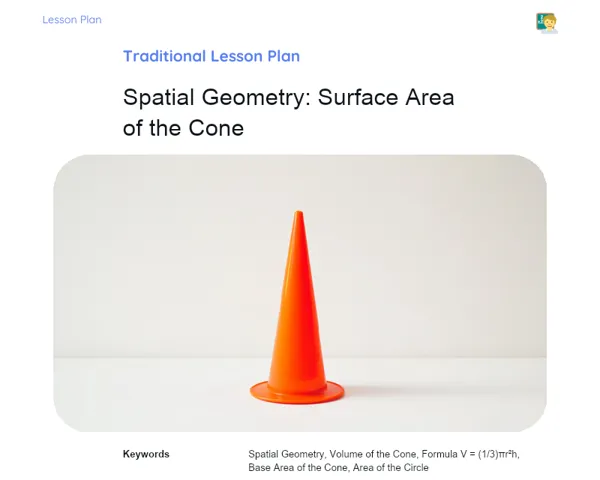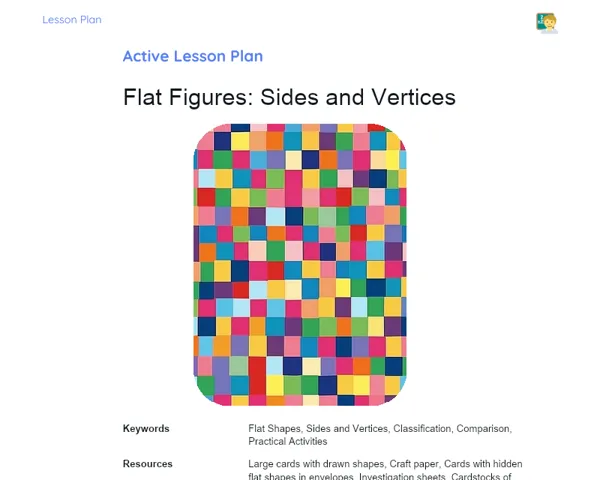Lesson Plan | Lesson Plan Tradisional | Statistics: Mode
| Keywords | Statistics, Mode, Measures of Central Tendency, Mode Calculation, Practical Examples, Discussion, Real-Life Problems, Mode Identification, Special Cases, Student Engagement, Problem Solving, Practical Applications, Content Summary |
| Resources | Whiteboard, Markers, Projector or interactive screen, Computer with internet access, Data sheets for exercises, Printed copies of practical examples, Notebook and pen for student note-taking |
Objectives
Duration: (10 - 15 minutes)
The aim of this stage is to introduce the specific goals of the lesson to the students, offering a clear outline of what will be covered. This framework helps guide learning and sets clear expectations for the session, ensuring students understand the significance of the topic and what they're expected to achieve by the end of the lesson.
Objectives Utama:
1. Explain the concept of mode in statistics and why it matters in central tendency.
2. Show how to calculate the mode from a data sample.
3. Tackle practical problems that involve finding and calculating the mode across various datasets.
Introduction
Duration: (10 - 15 minutes)
The goal of this stage is to contextualise the lesson's theme, engaging students and demonstrating the practical relevance of the mode in statistics. By linking the content to everyday scenarios and real-world examples, students will be more involved and motivated to learn. This introduction sets the foundation for a deeper insight into the concepts that will unfold during the lesson.
Did you know?
Did you know that tech companies often use the mode to figure out which products or services are most popular among customers? For instance, platforms like Netflix and Spotify analyse viewership and listenership to recommend content that users are likely to enjoy. This approach makes the user experience more tailored and enjoyable.
Contextualization
To kick off the lesson on mode in statistics, explain to the students that measures of central tendency are crucial for summarising data. The mode is one such measure that helps identify which value appears most frequently in a dataset. This idea is widely applicable in fields such as economics, sociology, health, and even consumer behavior analysis.
Concepts
Duration: (40 - 50 minutes)
The aim of this stage is to deepen students' understanding of the mode concept in statistics through detailed explanations and practical examples. By covering various scenarios and data types, students will learn to identify and calculate the mode in different contexts. The practical questions provide an opportunity for them to apply their newfound knowledge to solve problems, reinforcing their learning.
Relevant Topics
1. Definition of Mode: Clarify that the mode is the measure of central tendency that indicates which value occurs most frequently in a dataset. Stress that, unlike the mean and median, the mode can apply to both numerical and categorical datasets.
2. Identifying the Mode in Datasets: Show how to spot the mode in various datasets (small, large, categorical, numerical). Use straightforward examples and gradually ramp up the difficulty.
3. Practical Examples: Provide practical scenarios for calculating the mode, like a tally of student grades, sales figures for different products, or survey results on favourite colours.
4. Special Cases: Discuss instances where a dataset might have more than one mode (bimodal, trimodal, etc.) or no mode at all. Explain how to navigate these cases and the significance of recognising them in statistical analysis.
To Reinforce Learning
1. Given the dataset [2, 3, 4, 4, 5, 5, 5, 6, 7], what is the mode?
2. In a survey about favourite colours, 15 people chose blue, 10 chose green, 10 chose red, and 5 chose yellow. What’s the mode of this survey?
3. Consider the dataset [8, 10, 10, 12, 12, 14]. Does it have only one mode? If so, what is it? If not, explain why.
Feedback
Duration: (20 - 25 minutes)
This stage aims to ensure students possess a solid understanding of the mode concept by reviewing and engaging in a thorough discussion of their answers to the provided questions. Such a discussion reinforces learning, enabling students to clear up doubts, share ideas, and solidify the knowledge they've gained. Moreover, it encourages engagement and active participation, enriching the learning experience.
Diskusi Concepts
1. Discussion of Question 1: For the dataset [2, 3, 4, 4, 5, 5, 5, 6, 7], the mode is the number 5, as it appears most frequently (three times). 2. Discussion of Question 2: In the favourite colour survey, the mode is blue, with 15 individuals choosing it, the highest tally among the options. 3. Discussion of Question 3: The dataset [8, 10, 10, 12, 12, 14] has two modes: 10 and 12, since both appear with the same frequency (twice each), making it a bimodal dataset.
Engaging Students
1. 📋 Reflection Question: Why is it important to find the mode in a dataset? 2. 💬 Discussion: How might the mode be leveraged in practical scenarios, like market research or health studies? 3. 🔍 Reflection: What distinguishes mode from mean and median? When might you rely on mode more than the other central tendency measures? 4. ❓ Additional Question: In a dataset with many unique entries, what might happen to the mode? Can it be absent? Let’s discuss.
Conclusion
Duration: (10 - 15 minutes)
The goal of this stage is to summarise the core content covered during the lesson, reinforcing students' learning and ensuring they grasp the practical importance of the mode concept. This conclusion also aims to solidify the knowledge gained during the lesson, highlighting the topic's relevance and its myriad applications in everyday life.
Summary
['The mode is the measure of central tendency that signifies the most frequently occurring value in a dataset.', 'The mode can apply to both numerical and categorical datasets.', 'It is feasible to identify the mode in small, large, categorical, and numerical datasets.', 'There are scenarios where a dataset might have more than one mode (bimodal, trimodal) or lack a mode altogether.', 'The mode finds application in numerous fields such as economics, sociology, health, and consumer behaviour analysis.']
Connection
This lesson connected theory with practice by illustrating real-world examples of mode calculation across diverse datasets. Students witnessed the practical applications of the concept in daily life, spanning from grade assessment and opinion polls to product sales analysis, which underscored the mode's relevance in varied contexts.
Theme Relevance
Understanding the mode is key in everyday scenarios, as it aids in recognising trends and preferences across various fields. For instance, technology firms utilise the mode to determine which products or services are favoured by customers, thereby enhancing user experience and tailoring recommendations. A firm grasp of the mode is pivotal in market research and statistical investigations.



